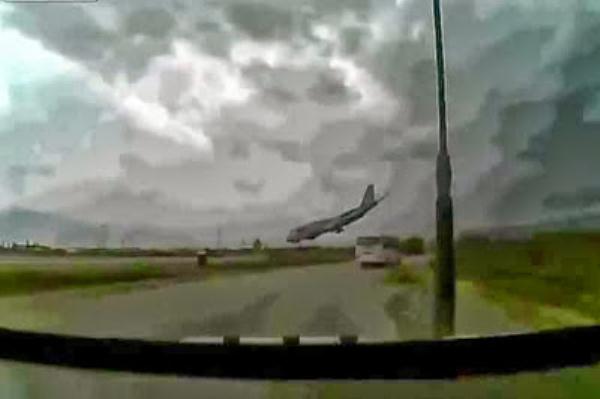Preliminary investigation reports from Accident Investigation Bureau (AIB) has it that the pilot, Abdulrahman Yakubu who flew the ill-fated Associated Airline’s Embraer 120 plane that crashed recently at the Murtala Muhammed Airport (MMA), Lagos, failed to yield computer warning of a take-off error.
The pilot’s grave error has been fingered to have caused the accident which claim had claimed the lives of 14 passengers out of the 20 aboard the aircraft.
While presenting the preliminary readout and analysis of flight 361’s flight recorders in Abuja, the crew was said to have ignored the warning from the onboard computer voice the Commissioner for AIB, Capt. Usman Muktar, revealed that Yakubu ignored the caution from the onboard computer voice.
The investigation which was done in AIB laboratory located in Abuja, was carried out alongside international flight recorder experts from Canada, who designed the laboratory.
Muktar confirmed that weather was not the cause of the Associated Airlines flight 361 was cleared for take-off by the Air Traffic Controller (ATC) on runway 18 left of the Murtala Muhammed Airport (MMA) Lagos.
Nevertheless, the crew was said to have ignored an automated warning from the onboard computer voice which indicated three chimes followed by; “Take off Flap, Take off Flap, Take off flap” signals.
Muktar pointed out that this was four seconds after the engine power was advanced to commence take off roll.
“This warning did not appear to come as any surprise to the crew, and they continued normally with the take-off. This warning continues throughout the take-off roll”, he said.
It was further revealed that the ‘set power’ call was made by the pilot and ‘power is set’ was confirmed by the First Officer as expected in the normal operations but approximately seven seconds after the ‘power is set‘ call, the internal aircraft voice warning system sounded ‘Take off Flap, Auto Feather’.
He explained that auto feather refers to the pitch of the propeller blades, adding that in the feather position, the propeller does not produce any thrust.
“At this time, we can state that the right engine appears to be producing considerably less thrust than the left engine. The left engine appeared to be working normally. The aircraft automated voice continued to repeat, Take off Flap, Auto Feather.’ “, he stated.
It was reported that immediately after lift-off, the aircraft slowly swerved off the runway to the right and ATC which observed that Flight 361 operation was not normal alerted the crew for situation report but got no response and the aircraft eventually crashed 31 seconds after the alert.
An aircraft engineer, Sheri Kyari, the flap on an aircraft is located at the trailing edge of the wing. It is at the rear end of the wings.
Kyari who is also a former president of Pilots and Aircraft Engineers in the grounded Nigeria Airways Limited, explained that the function of the flap when operational increases the surface area of the wing to generate enough lift at low aircraft speeds during aircraft takeoff or landing.
“When the flap is not set to the required degree for takeoff, the aircraft will have to do a long take-off run before gaining enough lift to lift-off the ground” Kyari explained.
However the AIB said the process of verifying the accuracy of the flight data is still ongoing as it had not been able to confirm the actual flap setting of the plane.
The AIB also assured that it was studying the Flight Data Recorder which contains several engine related parameters.
“The standard ‘eighty knots’ call was made by the First Officer. The first evidence that the crew indicated that there was a problem with the take-off roll was immediately following the ‘eighty knots’ call.
“The First Officer asked if the take-off should be aborted approximately 12 seconds after the ‘eighty knots’ callout”
AIB added that the captain, in response to the Flight Officer’s question to abort the take off, said that they should continue, adding that
The report also indicated that the failure of the crew to make V1 call, which is the speed at which the decision to abort or continue a take-off is made, or the Vr call, which indicates the speed at which it is planned to rotate the aircraft contributed to the crash.
The AIB commissioner further explained that after the Vr was called, the flying pilot pulled back the control column and The First Officer cautioned the Captain to do it ‘gently’, which indicated that the aircraft was not having a normal takeoff operation.
It was also noted “the aircraft did not produce enough overall thrust and that it was difficult or impossible to climb without risk of an aerodynamics stall”.
Capt. Mukthar revealed that the Flight Data Recorder (FDR) contained approximately 47 hours in solid state memory, while the Cockpit Voice Recorder (CVR) contained thirty-two and a half minutes of audio, which included internal conversation of two pilots, radio calls, and the overall environment in the cockpit.

